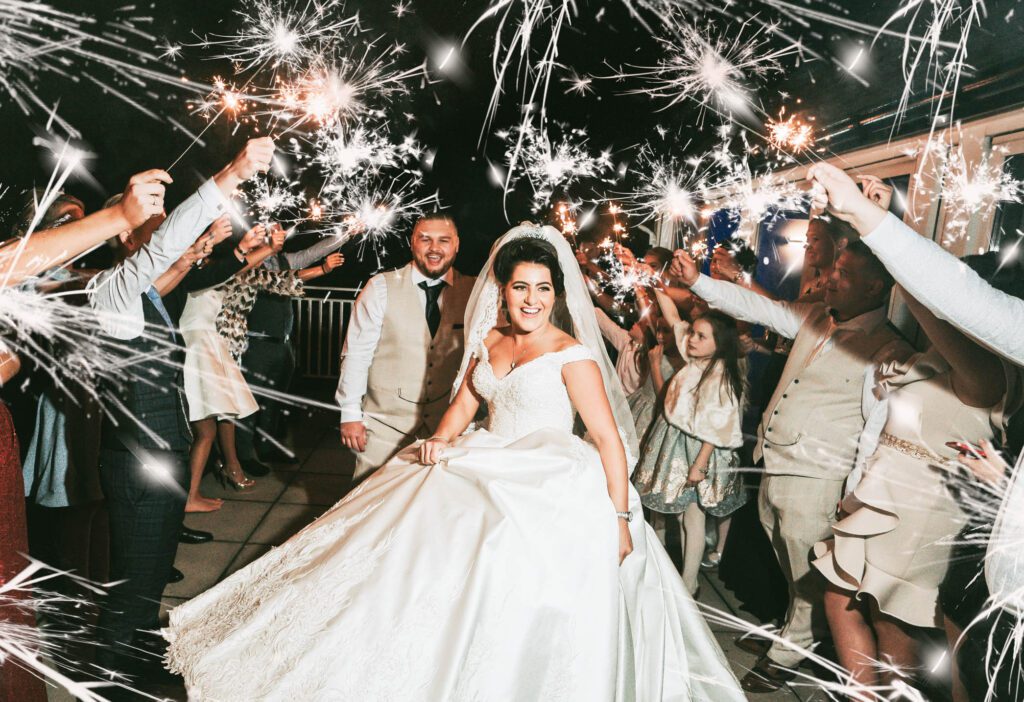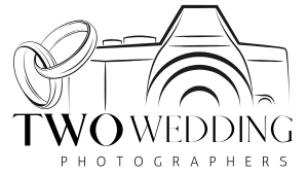Our Guide to wedding photography

We are two wedding photographers that love wedding photography. We are often asked lots of questions about wedding photography so we though we would put this guide together that answers lots of them.
Introduction
Wedding photography is the art and practice of capturing images of the special moments and memories of a wedding day. It is an essential part of any wedding as it allows the couple to relive their special day and preserve the memories for a lifetime.
Wedding photography has evolved over the years, and it now encompasses various styles and approaches, such as traditional, candid, photojournalistic, and fine art photography. Traditional wedding photography involves posed and staged shots, while candid photography focuses on capturing spontaneous moments and emotions. Photojournalistic photography, on the other hand, aims to document the day in a journalistic style, while fine art photography emphasises creativity and artistic expression.
The role of a wedding photographer is not just to take photos but also to create a comfortable and relaxed atmosphere for the couple and their guests. They should have excellent communication skills to understand the couple’s vision and preferences and provide suggestions and advice to ensure that they get the best possible photos.
Wedding photography requires technical skills, including knowledge of lighting, composition, and camera settings. It also requires equipment such as professional-grade cameras, lenses, and lighting equipment.
In summary, wedding photography is an essential part of any wedding, and it plays a significant role in preserving the memories of the special day. A skilled wedding photographer should be able to capture the essence of the day, tell a story, and create stunning images that the couple will cherish for a lifetime.
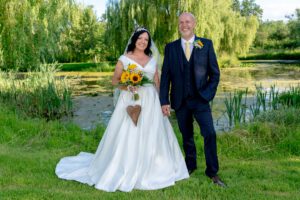

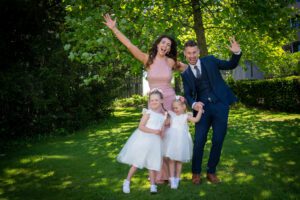
Explanation of the importance of wedding photography
Wedding photography is important because it captures the memories of one of the most significant and memorable days in a couple’s life. It is a day full of emotions, joy, and love, and having beautiful and high-quality photographs allows the couple to relive those special moments for years to come.
Here are some reasons why wedding photography is essential:
- Preserving memories: Wedding photography preserves the memories of the wedding day, allowing the couple to look back at the special moments and emotions of their wedding day years down the line.
- Capturing emotions: Wedding photography captures the emotions of the couple and their guests on the big day. The happiness, tears, laughter, and joy of the day are all captured in the photos.
- Family heirloom: Wedding photographs are not just for the couple but also for future generations. These photographs become a family heirloom and allow future generations to see the love and joy of their ancestors.
- Storytelling: Wedding photography tells the story of the day, capturing every detail and moment, from the wedding dress to the venue decorations, and everything in between. The photographs can also capture the interactions between guests and family members, allowing the couple to see moments they may have missed.
- Artistic expression: Wedding photography is an art form that allows us to use their creativity and skills to create beautiful and unique images that reflect the couple’s personality and style.
In summary, wedding photography is crucial for preserving memories, capturing emotions, and telling the story of the wedding day. It is an investment in the couple’s future and a family heirloom that can be cherished for generations.
The Skills You Need to Become a wedding photographer
Becoming a wedding photographer requires a combination of technical skills, creativity, and business acumen. Here are some of the key skills you’ll need to succeed in this field:
- Photography skills: You’ll need a strong foundation in photography, including knowledge of composition, lighting, exposure, and editing. You should be able to shoot in a variety of lighting conditions, including low light, and be comfortable using different types of equipment, including lenses, flash, and tripods.
- Communication skills: As a wedding photographer, you’ll be working closely with clients to understand their vision and preferences for their wedding day. You’ll need to be able to communicate clearly and effectively, both in person and in writing, to ensure that you deliver the images they want.
- Organization skills: Weddings are complex events with many moving parts, and it’s essential that you stay organized and prepared. This includes having backup equipment, creating a shot list, and coordinating with other vendors, such as wedding planners and videographers.
- Creativity: Wedding photography is an art form, and you’ll need to bring a creative eye and a unique perspective to each event. This means being able to think outside the box and come up with creative poses and shots that capture the emotions and beauty of the day.
- Business skills: To be successful as a wedding photographer, you’ll need to have strong business skills, including marketing, sales, and financial management. You should be able to create a business plan, set prices, and manage contracts and invoices.
- People skills: Wedding photography involves working with people in a high-pressure, emotional environment. You’ll need to be able to put clients at ease, work well with other vendors, and manage challenging situations, such as inclement weather or family conflicts.
Overall, becoming a successful wedding photographer requires a combination of technical and creative skills, as well as a passion for capturing the magic of one of life’s most important moments.
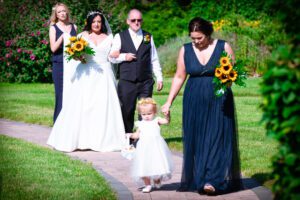

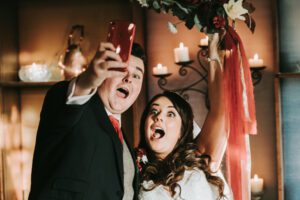
Our Advice if you are thinking about being a wedding photographer
An experienced wedding photographer might offer the following advice:
Communication is key: As a photographer, it’s important to communicate clearly with the couple to ensure you understand their expectations for their wedding day. Make sure you have a clear understanding of their timeline, the locations they want photos taken, and any specific shots they are hoping to capture.
- Be prepared: Weddings can be unpredictable, so it’s important to be prepared for anything. Make sure you have backup equipment and bring extra batteries and memory cards.
- Build a relationship with the couple: Building a relationship with the couple before the wedding day can help them feel more comfortable in front of the camera. Take the time to get to know them, understand their personalities, and build rapport.
- Be flexible and adaptable: Weddings can be chaotic, and things may not always go according to plan. Be prepared to adjust your plans and adapt to changing circumstances.
- Focus on the details: While capturing the big moments is important, don’t forget to focus on the smaller details that make the wedding unique. Pay attention to the decor, the flowers, and the other details that the couple has put so much time and effort into.
- Stay organized: Weddings can be fast-paced, and it’s important to stay organized to ensure you capture all of the important moments. Create a shot list and stick to it, and make sure you have a system for organizing and backing up your photos.
- Have fun: Finally, remember that weddings are joyous occasions, and it’s important to have fun and enjoy the experience. Your positive energy will help put the couple at ease and capture the joy and happiness of the day.
Equipment you will need for Wedding Photography
Equipment List as a photographer:
- MacBook Pro
- 2 Monitors
- Cameras
- Lenses
- Camera and backup camera
- Medium zoom lens
- Telephoto Lens
- Wide angle lens and prime lenses
- Speedlights
- Memory cards and batteries
- Tripod and light stands
- Flash diffuser
- Camera bag
- Studio strobes and umbrellas
- Lens cleaning kit and lens hoods
Basic Tips for Photographing a Wedding
Here are some basic tips for photographing a wedding:
- Create a shot list: Create a list of must-have shots, including the ceremony, the first dance, and the cutting of the cake. This will help you stay organized and make sure you don’t miss any important moments.
- Scout the location: Visit the wedding venue ahead of time to scout out potential photo locations and familiarize yourself with the lighting and other conditions. This will help you plan your shots and ensure that you are prepared on the day of the wedding.
- Use natural light: Natural light is often the most flattering for wedding photography. Try to use natural light as much as possible, and avoid using flash if you can.
- Be discreet: Try to blend into the background as much as possible, and avoid drawing attention to yourself. This will help you capture candid moments and ensure that the focus stays on the couple.
- Anticipate the action: Be prepared to capture spontaneous moments, such as the couple’s first kiss or the flower girl’s antics. Anticipate the action and be ready to capture it as it happens.
- Edit carefully: Finally, be sure to edit your photos carefully to ensure that they are of the highest quality. Pay attention to color correction, exposure, and other details to make sure that your photos look their best.
Pre-wedding photography
Pre-wedding photography is a popular trend in which couples have a photoshoot before their wedding day. Here’s what you can expect from a pre-wedding photography session:
- A personalized experience: Pre-wedding photography sessions are typically tailored to the couple’s preferences and personalities. You can work with us to choose a location that’s meaningful to you, incorporate props that reflect your interests, or choose a theme that fits your style.
- Time to get comfortable in front of the camera: A pre-wedding photoshoot can be a great opportunity to get comfortable in front of the camera. You’ll have a chance to work with your photographer and get used to posing and being photographed, which can help you feel more at ease on your wedding day.
- A chance to capture special memories: Pre-wedding photos can be a great way to capture special memories and moments leading up to your wedding day. You might choose to have photos taken at a favorite park or beach, or include your pets or other special elements in the shoot.
- Use for wedding invitations and other items: Pre-wedding photos can be used for a variety of purposes, including wedding invitations, save-the-dates, and other wedding-related items. Having a pre-wedding photoshoot can give you a variety of photos to choose from for these items.
- Opportunity to build a relationship with your photographer: A pre-wedding photoshoot can also be a great opportunity to build a relationship with your photographer. You’ll have a chance to get to know them and their style, which can help you feel more comfortable on your wedding day.
Overall, pre-wedding photography is a fun and unique way to capture special memories and build excitement leading up to your wedding day.
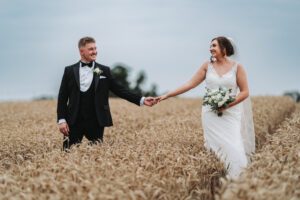
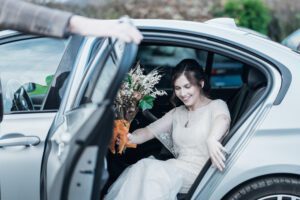
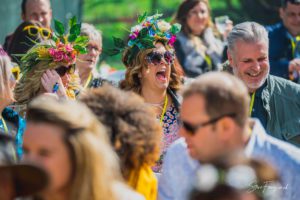
Two Photographers Positions During the Wedding
As two wedding photographers at the wedding ceremony, the best positions for us will depend on a few factors, such as the size and layout of the venue, the number of guests, and the specific moments that need to be captured. Here are some of the things we consider when deciding where to position ourselves.
- One photographer at the front and one at the back: This is a common setup for ceremonies in larger venues, where one photographer can capture the bride and groom’s faces during the ceremony while the other photographer captures wider shots of the entire scene from the back.
- One photographer at the altar and one at the aisle: This is a good setup for smaller venues where there may not be enough space for two photographers at the front. One photographer can capture close-up shots of the couple’s faces during the ceremony, while the other photographer can capture the bridal party and guests from the aisle.
- Both photographers at the back: This is a good setup for outdoor ceremonies, where both photographers can capture the entire scene from a distance, including the bride’s entrance and the exchange of vows.
- One photographer at the front and one roaming: This is a good setup for capturing candid moments during the ceremony, where one photographer can focus on the bride and groom while the other photographer moves around to capture candid shots of guests and the overall atmosphere of the ceremony.
Ultimately, the best positions for us will depend on the specific needs and preferences of the couple and the various factors present at the ceremony itself. The main thing is two is better than one as we will always get all the key moments are captured from the best angles.
Choosing your Wedding Photography Style
TRADITIONAL
- Traditional wedding photography style typically involves taking posed and staged photographs of the bride and groom, wedding party, and family members. We often direct people to pose in a specific way or use traditional poses that are commonly used in wedding photography.
- The emphasis in traditional wedding photography is on capturing the key moments of the wedding day, such as the exchange of rings, the first kiss, the cutting of the cake, and the first dance. We may also take group photos of the wedding party and family members.
- In terms of editing, traditional wedding photography typically involves basic color correction and retouching, with the aim of producing a clean and polished final product. The resulting images tend to be classic and timeless in style, and often have a formal or elegant feel.
- Overall, the traditional wedding photography style is characterized by its emphasis on posed, staged photographs and its focus on capturing the important moments of the wedding day.
FINE ART
- Fine art wedding photography is a style of photography that emphasizes creating beautiful and artistic images of the wedding day. This style of photography is inspired by traditional fine art, and often incorporates elements such as composition, lighting, and color to create images that are visually stunning and unique.
- Fine art wedding photographers often use a variety of techniques to create their images, including creative framing, selective focus, and unique angles. They may also use post-processing techniques such as color grading and image manipulation to enhance the artistic qualities of the images.
- In contrast to traditional wedding photography, which focuses on capturing the events of the day, fine art wedding photography prioritizes the creation of artistic images that tell a story and evoke emotions. This style of photography is often preferred by couples who are looking for a more creative and artistic approach to wedding photography.
- However, it’s worth noting that fine art wedding photography is a subjective term, and different photographers may have different interpretations of what constitutes fine art. It’s important to research potential photographers thoroughly and look at their portfolio to ensure their style aligns with your vision for your wedding day.
MOODY/TRENDY
- A moody and trendy wedding photography style is a modern and popular style that emphasizes creating images with a dramatic, moody, and artistic feel. This style often incorporates a range of colors, including dark and muted tones, to create a unique and moody aesthetic.
- The moody and trendy style of wedding photography often uses creative lighting and framing techniques to create images with a high level of visual interest. The images may be edited with a variety of post-processing techniques, such as color grading or selective desaturation, to enhance the moody and dramatic feel of the images.
- This style of photography is often preferred by couples who want their wedding photos to be edgy, artistic, and unique. It’s a great choice for couples who want their wedding photos to stand out and be different from more traditional wedding photography styles.
- However, it’s important to note that the moody and trendy style of wedding photography may not be for everyone. Some couples may prefer a more classic and timeless approach to their wedding photos. It’s important to research potential photographers thoroughly and look at their portfolio to ensure their style aligns with your vision for your wedding day.
PHOTOJOURNALISTIC
- Photojournalistic wedding photography is a style of wedding photography that captures moments in a documentary style. Rather than focusing on posed shots or staged scenes, we capture candid moments as they happen, often without directing the subjects.
- The goal of this style of photography is to tell the story of the wedding day as it unfolds, capturing the emotions, atmosphere, and details of the event. We often use a combination of black and white and color images, and may use a variety of techniques to create a dynamic and engaging visual narrative.
- Photojournalistic wedding photography requires a skilled photographer who is able to anticipate and capture important moments throughout the day. It also requires a high level of technical skill, its crucial that we have the ability to capture clear, well-lit images in a variety of lighting conditions.
- Many couples prefer the photojournalistic style of wedding photography because it provides a more natural and authentic representation of their special day.
TIMELESS
- Timeless wedding photography is a style of photography that aims to capture the beauty and emotion of a wedding day in a classic and timeless way. This style of photography focuses on creating images that will look beautiful and relevant for many years to come, rather than following the latest trends.
- The key elements of timeless wedding photography include classic compositions, natural lighting, and soft color tones. We use a combination of posed and candid shots to capture the emotion and atmosphere of the day, but the emphasis is always on creating images that are elegant and timeless.
- Timeless wedding photography is often characterized by its simplicity and understated elegance. The images may be edited in a way that enhances their natural beauty, but the focus is always on creating images that will stand the test of time.
- This style of photography is often preferred by couples who want their wedding photos to look beautiful and relevant for many years to come, rather than being tied to a particular style or trend. It’s a great choice for couples who want their wedding photos to be classic and elegant, rather than flashy or trendy.
EDITORIAL
- Editorial wedding photography is a style of photography that is inspired by the images found in magazines and fashion editorials. It is a highly stylized and curated style that focuses on creating beautiful and striking images that tell a story and evoke emotions.
- We will often work closely with the couple to plan and execute the photo shoot, selecting locations, props, and outfits to create a specific aesthetic. They will also use a variety of techniques such as creative lighting, unique angles, and dynamic poses to create visually stunning images.
- Editorial wedding photography is often characterized by its use of high-contrast lighting, dramatic shadows, and bold colors. The images may be edited in a way that enhances their artistic qualities, such as adding a filmic look or a vintage feel.
- This style of photography is often preferred by couples who want their wedding photos to be more than just a documentation of their day. They want their photos to be visually striking and tell a story that captures the emotions and atmosphere of their wedding day. It’s a great choice for couples who are looking for a creative and artistic approach to their wedding photography.
Critical Wedding Photos
There are many important moments to capture on your wedding day, but here are some critical wedding photos that you may want to make sure your photographer captures:
- The bride and groom getting ready: These photos capture the excitement and anticipation of the wedding day as the bride and groom prepare for the ceremony.
- The first look: The first look is a special moment when the bride and groom see each other for the first time on their wedding day. This moment is often emotional and romantic, and is a great opportunity for beautiful photos.
- The ceremony: The ceremony is the heart of the wedding day, and it’s important to capture all the key moments, such as the exchange of vows and rings, the first kiss, and the recessional.
- Family and group photos: Family and group photos are important for capturing memories with loved ones, and are often cherished for years to come.
- Couple portraits: Couple portraits are a chance for the bride and groom to have some beautiful and romantic photos together, often in a scenic location.
- Reception details: Reception details such as the table settings, centerpieces, and decorations help capture the mood and style of the wedding.
- Cake cutting and first dance: These are special moments that are often symbolic of the couple’s union, and are great opportunities for photos.
- Candid moments: Candid moments throughout the day, such as guests laughing, dancing, and celebrating, help to capture the energy and joy of the wedding day.
Overall, it’s important to communicate your priorities and preferences with your photographer to ensure that all the critical moments are captured on your wedding day.
Lighting Considerations
Lighting is a crucial element in wedding photography, as it can greatly affect the look and feel of the photos. Here are some lighting considerations for wedding photography:
- Natural light: Natural light can create a soft, romantic look in wedding photos. When shooting outdoors, photographers should consider the time of day and the direction of the sun to find the best lighting. Early morning or late afternoon light tends to be softer and more flattering, while midday light can be harsh and create unflattering shadows.
- Indoor lighting: Indoor lighting can be more challenging to work with, especially in venues with dim lighting or mixed lighting sources. Photographers may need to use additional lighting equipment, such as flashes or off-camera lights, to create the desired effect.
- Flash photography: Flash photography can be useful in low-light situations, but it’s important to use it strategically to avoid harsh shadows or overexposure. Off-camera flash can create a more natural look and can be used to create dramatic effects.
- Backlighting: Backlighting can create a beautiful, ethereal effect in wedding photos, but it requires careful control of the exposure and lighting to avoid overexposure.
- Light modifiers: Light modifiers, such as reflectors or diffusers, can be used to soften or direct the light and create a more flattering look in photos.
- Venue considerations: Photographers should also consider the specific lighting conditions of the wedding venue, such as the color temperature and intensity of the lights, and adjust their settings accordingly.
Overall, lighting is a critical element of wedding photography, and photographers should be well-prepared to work with a variety of lighting conditions to capture the best possible photos of the couple’s special day.



Tips for capturing great photos
- Plan ahead: Meet with the couple in advance to discuss their vision and preferences for the wedding photos. Be sure to create a shot list and timeline to ensure that all the important moments are captured.
- Be prepared: Bring backup equipment and extra batteries to ensure that you’re ready for any unforeseen circumstances. Also, dress appropriately and be professional in your behavior.
- Get to know the couple: Spend time with the couple to build a rapport and make them feel comfortable in front of the camera. This will help to create more natural and authentic photos.
- Be creative: Experiment with different angles, lighting, and compositions to create unique and interesting photos. Don’t be afraid to try new things and take risks.
- Capture candid moments: Some of the best wedding photos are the candid moments that capture the joy and emotion of the day. Be alert and ready to capture these special moments as they happen.
- Focus on the details: Be sure to capture the small details that make the wedding unique, such as the flowers, decor, and special touches that the couple has chosen.
- Use natural light: Natural light can create a soft and romantic look in wedding photos. Use it to your advantage by finding the best angles and times of day for outdoor shots.
- Stay organized: Keep track of your shots and make sure you’re capturing all the important moments. Use a shot list or checklist to stay on track and ensure that you don’t miss anything.
- Edit with care: Take the time to edit your photos carefully, adjusting the color, brightness, and contrast as needed. Be sure to deliver a high-quality product that meets the couple’s expectations.
Overall, capturing great wedding photos requires a combination of planning, creativity, and attention to detail. By following these tips and putting your own unique spin on them, you can create beautiful and memorable photos that the couple will cherish for a lifetime.
What we do after the wedding day
After the wedding, we typically follows these steps:
- Back up photos: The first thing a wedding photographer should do is back up all of the photos taken at the wedding. This is typically done by transferring the photos to a computer and then copying them to an external hard drive or cloud storage.
- Cull photos: Next, we will typically go through all of the photos taken and select the best ones to edit and deliver to the couple. This process is called culling and involves selecting the photos that are in focus, well-exposed, and tell the story of the wedding day.
- Edit photos: Once the photos have been culled, we will then edit them to correct any color issues, adjust exposure, and enhance the overall look of the images. This process can take several hours or even days, depending on the number of photos taken and the level of editing required.
- Deliver photos: After the editing process is complete, we will then deliver the photos to the couple. This can be done via a digital download link or by providing the photos on a USB drive or other physical media.
Follow up with clients: Finally, we will follow up with the couple to ensure that they are happy with the photos and to answer any questions they may have. Hopefully the couple will leave us a 5 star review or testimonial on Google, which helps to attract future clients.
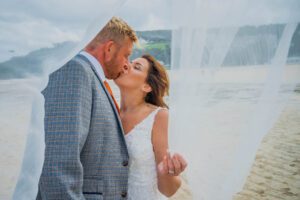
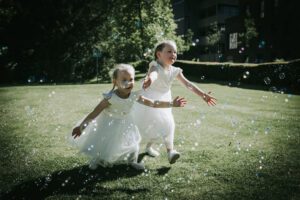
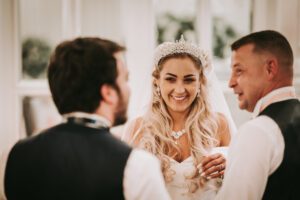
Questions wedding photographers get asked
Q: How many photos do you supply?
The number of photos a wedding couple can expect after their wedding can vary depending on the specific package they have chosen with their wedding photographer. However, a general rule of thumb is that we will deliver between 75 to 125 edited photos per hour of shooting.
For example, if we shot a wedding for 8 hours, the couple can expect to receive around 400 to 800 edited photos. However, this number can vary depending on a variety of factors, including the size of the wedding, the number of events and activities during the wedding day, and the amount of time spent on formal portraits.
Q: Do you offer a pre-wedding consultation?
Yes we do and here are the reasons we always like to have one:
- Establishing a relationship: A pre-wedding consultation allows the couple to meet us in person and establish a relationship. This can help to build trust and rapport, which can lead to more relaxed and natural photos on the wedding day.
- Discussing expectations: During a pre-wedding consultation, we can discuss the couple’s expectations and preferences for the wedding photos. This can help us to tailor their approach to the couple’s needs and ensure that they capture the moments that are most important to the couple.
- Planning the timeline: A pre-wedding consultation is also an opportunity to plan the timeline for the wedding day, including the time for getting ready, the ceremony, the formal portraits, and the reception. This can help to ensure that everything runs smoothly on the day of the wedding and that we are able to capture all of the important moments.
- Discussing logistics: Pre-wedding consultations also provide an opportunity to discuss logistics, such as the location of the wedding, the lighting conditions, and any potential challenges that may arise. This can help us to prepare for the wedding day and ensure that they have the right equipment and resources.
Overall, accepting a pre-wedding consultation can help to ensure we are all are on the same page and that the couple receives the wedding photos they have envisioned. It allows for open communication and planning, which can ultimately lead to a more enjoyable and stress-free wedding day for everyone involved.
Q: Can we meet before booking you as our wedding photographer?
Yes, meeting before booking any wedding photographer is highly recommended. It’s important to have a face-to-face meeting or at least a virtual meeting with your potential photographer to ensure that you feel comfortable with them and that their style and approach to wedding photography align with your preferences.
During this meeting, you can discuss your wedding plans and vision, ask any questions you may have, review our portfolio, and get a sense of their personality and professionalism. This can help you make an informed decision when choosing a photographer and ensure that you have a positive and stress-free experience on your wedding day.
Q: How long does it take for me to get our wedding photograpghs back?
The timeline for receiving your wedding photographs can vary depending on our workload. The busy months of the year we like to say within a month but usually hoping to get them to you within a couple of weeks.
Please keep in mind that the process of editing and delivering wedding photographs takes time, we will need to carefully select and edit each image to ensure the best quality and presentation. While it can be exciting to receive your wedding photos as soon as possible.
Q: What deposit and payment terms do you have?
We like to keep things simple, we ask for a £250 deposit to book the day in our diary and the balance either on the day or a week or so before the day.
Q: What contact can we expect with our Wedding Photographer?
Here is an overview of the types of contact you may have with us:
- Initial Consultation: Before hiring us, you will likely have an initial consultation to discuss your wedding plans and vision, review our portfolio, and ask any questions you may have.
- Pre-Wedding Consultation: Prior to the wedding, you will have another consultation with us to discuss the timeline, locations, and any specific shots you want to capture.
- Engagement Session: If requested we can include an engagement session, which can provide an opportunity to get to know us and our shooting style before the wedding.
- Wedding Day: On the wedding day, we will be present to capture all the important moments, from getting ready to the ceremony and reception.
- Post-Wedding: After the wedding, you may have some contact with us we edit and deliver your wedding photos. This may include updates on the editing progress and delivery timeline.
- Album Design: If you would like an album, we will contact you to review and approve the final album design.
Even though we say this ourselves our communication is great, we use WhatsApp on our personal phones so that you contact us whenever you wish.
Q: What sort of edit do you apply to the images?
We will typically use a combination of basic and advanced editing techniques to enhance and refine the images we capture. These edits may include:
- Basic adjustments: This can include adjustments to the exposure, brightness, contrast, and color balance to ensure that the images are properly exposed and color-corrected.
- Retouching: This can include removing blemishes, stray hairs, or other distracting elements in the images.
- Cropping: Photographers may crop images to improve the composition or to highlight specific details in the image.
- Color grading: This involves adjusting the color tones of the image to achieve a desired look and feel.
- Creative editing: This can include applying special effects, such as black and white or sepia tones, or adding textures or other creative elements to the images.
We generally aim for a light and airy style of photo. If you have a particular style of photo you like please let us know and we can edit in that style.
What do I physically get after the wedding?
The physical products you receive after your wedding will depend on the package and services you have selected.. Here are some common products that we include in our wedding photography packages:
- Digital Images: We will provide digital copies of the edited images through an online gallery for download.
- Prints: Some of our photography packages include a selection of prints in different sizes, which you can display in your home or share with family and friends.
- Albums: We also off a wide range of album design services, where they will create a custom wedding album featuring your favorite images from the wedding day.
- Canvas or Wall Art: You may have the option to order canvas prints or other wall art featuring your favorite images from the wedding.
- Additional Products: Some photographers may offer additional products, such as thank-you cards, photo books, or other custom photo products.
It’s important to discuss the products included in your wedding photography package with us, to ensure that the products align with your preferences and needs. Additionally, you may have the option to purchase additional products or prints a la carte after the wedding.
How much are your albums?
The cost of a wedding photo album can vary depending on the size, number of pages, materials, and design elements you choose. Ours range from £50 for an A4 size photobook to over £1,000 for a completely bespoke wedding album!
Why are your prices what they are?
The average price in the UK for one wedding photographer to photograph a wedding is £1290. As a quick and direct comparison our most expensive package costs £1250 and you get TWO photographers!
But why is it the cost it is… Well, Wedding photography is a time-intensive and laborious task that requires a significant amount of effort both before and after the wedding day. We typically spend several hours on the wedding day capturing images, and then we spend many more hours selecting, editing, and processing the photos to deliver a finished product. The time and effort involved in wedding photography can add up quickly, and this is reflected in our pricing.
Equipment and Tools:
We need high-quality equipment and tools to capture stunning images. We have 5 professional-grade cameras, 14 lenses, lots of lighting equipment, and editing software, all of which is expensive. In addition to the initial cost of this equipment, we also need to maintain and upgrade it regularly to ensure they’re producing the best possible images.
Expertise and Experience:
As with most Wedding photographers we are skilled professionals who have spent years honing our craft. We have experience working in various lighting conditions and challenging environments, and we know how to capture the perfect shot at the right moment. Our expertise and experience allow us to produce stunning images that will be treasured for years to come.
Business Overhead:
Like any business, we have overhead costs that they need to cover. We need to pay for marketing and advertising, website hosting and maintenance, office space, insurance, and taxes. All of these costs need to be factored into their pricing to ensure we can continue to run as a successful business.
In summary, our costs are what they are because we provide a valuable service that requires a significant amount of time, effort, and expertise. They use expensive equipment and tools to capture stunning images and have overhead costs associated with running a business.
Who owns the copyright to the photos?
We give full release of copyright to our couples as part of their wedding photography package. This means that the couple have the right to use, print, and distribute the photos for personal use, but not for commercial purposes without our permission.
Do you also do some more formal family group shots?
Wedding day formal family group shots are typically a series of posed photographs taken with the bride, groom, and their respective families. These photographs are usually taken after the ceremony and before the reception.
The family group shots can include the parents of the bride and groom, grandparents, siblings, and any other close family members.
To ensure that these group shots are successful, it’s important to plan ahead. Make a list of the family members to be included in each shot, and share it with us well in advance of the wedding day. This will help us to plan the shots and ensure that everyone is present and ready to go when it’s time to take the photographs.
It’s also a good idea to designate someone (such as a bridesmaid or groomsmen) to help gather family members and keep everyone organised during the photo session. This person can help us to quickly and efficiently move from one group shot to the next, so that the process goes smoothly and doesn’t take up too much time.
Remember, while these group shots are an important part of capturing the memories of your special day, it’s also important to enjoy the moment and not get too bogged down in the details. Work with your photographer to plan ahead and ensure that the process is as stress-free as possible, so that you can focus on celebrating with your loved ones.
What do other people think?
We are very proud of our Google reviews, please have a look at them here.
What Wedding Photography equipment do you use?
Here is a list of the basic equipment we use. We have many more bags, tripods, accessories besides!
Drones
DJI Mavic Air 2 £750
DJI Mini 2 drone £550
Flash Equipment
4 Godox Sony AD200 Pro £1,200
2 Godox Sony V1 £500
That is over £40,000 worth of equipment taht we take with us to every wedding.
Cameras
Sony A7R III £2,249
Sony A7R III £2,249
Sony A7R IV £2,999
Sony A9 £3,999
Sony A7S III £3,888
Insta360 RS 360 camera £886
DJI Action Camera £350
Memory Cards
10 256 Gb fast SD cards £2,000
Lenses
Sony 24mm F1.4 GM £1,299
Sony 35mm f1.4 GM £1,499
Sony 50mm f1.2 GM £2,099
Sony 16-35mm f2.8 GM £1,999
Sony 24-70mm f2.8 GM £2,099
Sony 90mm macro f2.8 G £849
Sony 70-200mm f2.8 GM OSS II £2,599
Sony 85mm f1.8 GM £1,499
Sony 135mm f1.8 GM £1,599
Sony 12-24mm f2.8 GM £2,699
What questions should you ask your wedding photographer?
Do you have experience shooting weddings?
Can I see your portfolio?
What is your shooting style?
Do you have backup equipment?
Can you provide references?
What is your turnaround time for delivering photos?
Do you offer any additional services or packages?
What is your pricing structure?
Do you have insurance?
Get in touch with us today
If you are in need of a photographer and want to discuss your wedding further then get in touch with us today and we will be happy to help.
